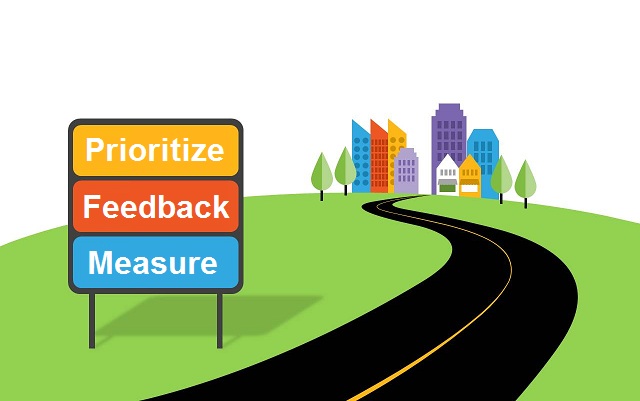Your business’s product is the most important factor when it comes to evergreen success. Long ago, time was that consumers and businesses could be fooled by clever or overwhelming marketing. But in the age of reviews, virality, and word-of-mouth, the best product is the winner. The product roadmap — the defining set of goals, features, and vision for your product — is not just important. It’s everything.
So, just how do you go about ensuring that your roadmap is taking you and your team in the right direction? While there’s no “secret formula” that can guarantee success, there are important elements that every successful product roadmap always has in place. By using these three elements as the north stars, you’ll make sure your roadmap is as helpful, and as updated, as it should be.
1 Prioritize
Although it might be exciting to create a plan for your product when it’s in version 8.0, you need to start where you’re at and take logical steps moving forward. Having a clear vision as to where you are going is huge because it allows you to know exactly where you need to be next.
This requires strategically saying “no.” Turning down opportunities or ideas you’re excited about is hard, but it’s essential to making real progress forward
Allow your product roadmap to have a very strong foundation so that all future iterations can grow from it. When looking at the big picture, your team should be able to answer, “What comes first?” Strategically deciding what comes next over and over again is the blueprint for a successful product roadmap.
2 Leverage Feedback
As you answer each “what-comes-next” question, you should always be taking into account the feedback and data you are collecting from your customers. Knowing what their experience is like, and what’s most important to them, will allow you to continue to steer your business in the appropriate direction. Keeping your roadmap up-to-date, then, is crucial.
At ZipBooks, I revisit the roadmap weekly making subtle changes to reflect feedback, partnerships, or new goals. Businesses that make one map at the very beginning and never revise are likely to be in for a shock when they get to their final destination. While you can plot your course as much as you want, a great map doesn’t do any good unless you are looking at the road in front of you.
3 Measure
One of the benefits of a roadmap is that it lets you know when you have arrived. Your product roadmap needs to include measurable goals that allow you to track your progress, reflect, and then revise your course as necessary.
Pearson’s Law states that “when performance is measured, performance improves. When performance is measured and reported back, the rate of improvement accelerates.” This is true of any goal, but especially for product development.
Every person on your team should know specifically what they are responsible for within the product roadmap – and they should also be held accountable for both its success and failure. The more tangible you make the steps along the way, the easier it will be for you to know how things are going. Eliminate broad goals in exchange for ones that are clear and precise.
With a great product roadmap in place, you’ll get to enjoy a business horizon filled with increased revenue, more customers, and, yes, lots of success.




